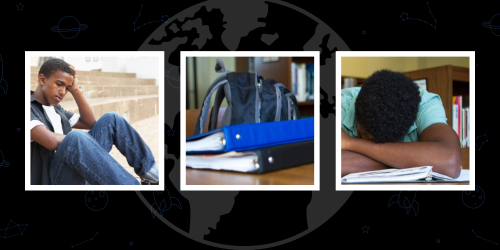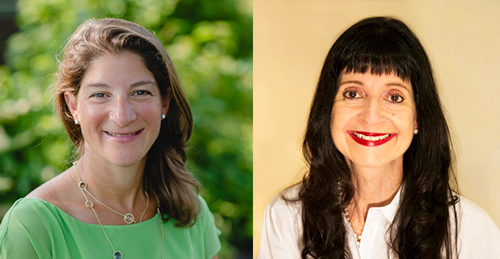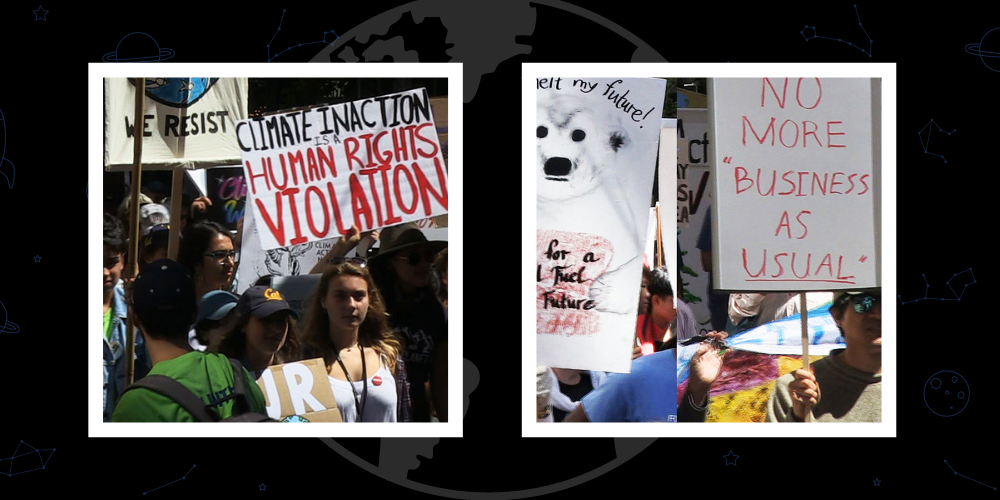This month audiences can screen student Patrick Li’s short video (part of Planet Classroom’s problem solvers video series), Solving the College Mental Health Crisis. In it, Li highlights a study by Dr. Wendy Fischman and Dr. Howard Gardner – The Real World of College.
In this study, Fischman and Gardner collected college data from 2013-2018. They interviewed 2000 individuals across 10 disparate colleges and universities. One thousand participants were students—half first-year students and half graduating students. One thousand were adults—the bulk were faculty and administrators, and the other half divided among trustees, young alums, parents, and job recruiters. The team interviewed every individual for an hour with open-ended questions to allow participants to talk about what was most important to them. To their surprise, mental health was the biggest issue on campuses.
The Global Search for Education is pleased to welcome Dr. Wendy Fischman.
The majority of individuals who participated in your study indicated that mental health was the biggest problem on campus. What surprised you most about the factors making students more prone to mental health issues in the college environment?
It is not clear whether students experience more mental health challenges in college than they do in other environments or at other times.
I am not a mental health expert, nor was our study about mental health in college. It was surprising when we started our study, because neither we—nor others—expected us to encounter significant mental health issues. Rather, our interest was in understanding the college experience and perspectives that all different stakeholders have for the college experience.
Across all of the different stakeholders and across all institutions, to our GREAT surprise, on the whole individuals agreed it’s the biggest problem students face on the college campus.
Mental health on the college campus was not the focus in the scholarly or popular press ten years ago. Along with the public we heard much more about the finances (in terms of the cost of college), alcohol and safety, and free speech. But in our study, those topics paled in comparison to the concerns about mental health.
In 2022, this finding may not raise eyebrows, but I do believe that our understanding of the rationale for why mental health is such a big problem on the college campus is surprising.
Across our study, about 1/5 of the students volunteered their own mental health issues. Therefore, the fact that there was so much agreement about mental health issues on campus should not be interpreted as a sign that everyone who discussed it experienced it themselves. We just don’t know.
Another interesting thing. When we asked students why they perceive mental health to be a big problem in college, they did not discuss the reasons we might have predicted, including social media, a feeling of alienation or trouble fitting in, depression, or feelings of inadequacy or not being able to do the work.
Instead, more than half of the students discuss the pressure to achieve external measures of success—to get good grades, to secure internships, get jobs—to build a perfect resume. In fact, some students talk about the importance of “perfection” and “effortless perfection”—not only do they feel pressure to be perfect, but to make it look as if performing well is natural and takes no work.
We also find that faculty and administrators do not volunteer this rationale. Rather, they describe the problems we might have expected, things like loneliness, living away from home, balancing school work with other priorities like paid work or family life (for those not residing on campus), and financial issues.
This lack of agreement or understanding—this misalignment—is troubling. We wonder—and we worry about—how well faculty and admin know their students and vice versa.
On the other hand, parents’ rationales are in agreement with the students. Indeed, we find that college students still mainly rely on their parents—and often their peers—when they need help.
Back to your question about why this seems to come up in the context of college:
First, the pressure to achieve and to be perfect may crop up once they arrive on the college campus, but chances are that this vexing situation stems from their high school experience and the pressure they felt to build a resume to get into college.
While we can’t state this conclusively on the basis of our study, we do find that the majority of first-year students express a transactional mental model about the college experience. They see it as a means to an end—a place to earn good grades to move on to a job. They come in this way, and so it seems reasonable to think that this model was formed in high school—or earlier. In fact, we find that the majority of graduating students also express a transactional mental model—proving that these models are not easy to change or “undo.”
Of course, many in the society would embrace a transactional view of college. But in fact we found that it is more destructive than helpful. We find that students who have a transactional view of college actually gain less intellectual capital than those who have exploratory or transformational views of college. In a sentence, we developed a way to assess—and score—one’s ability to attend, analyze, reflect, connect and communicate on issues of importance. We find less “growth” over the course of college for those students with transactional mental models, and more “growth” for those students with exploratory or transformational views.
Second, another reason, which seems to be a double-edge sword. On many campuses, we heard from students (as well as on-campus adults) that there is no longer a major stigma for mental health issues, which is a positive. Students feel comfortable talking about it, going to counseling, taking time off when they need it. The problem is almost every school is struggling to keep up with the demand—it seems that the more resources they pour into mental health services, the more students seek it out.
It’s a complicated issue, certainly not straightforward. But one of our own major lessons is not to believe everything you read in the newspapers—talking directly at length with students as well as other stakeholders is the best way to understand the “real world” of college.
How do you believe the pandemic has impacted the college mental health problem?
Because most of our data collection was complete by 2018, I can’t talk about the pandemic and mental health on the college campus with certainty. From everything I have read, mental health issues seem to be on the rise—not just with college students. Some people feel more isolated, feel that things are out of their control, disappointed that they were “cheated” out of a year of being a college student, and many have become more reliant on social media. However, as I just discussed, we can’t assume that this is fact without speaking with students themselves. And, to take this one step further, because there are a lot of job opportunities for students now, at the end of 2021, it’s possible that students aren’t as stressed about securing a job right out of campus. In general, the pandemic has brought mental health issues to the fore, and while upsetting, more discussion and honesty may help to dispel some of the stigma that so many felt for a long time.
Are you optimistic about the mental health resources available to solve this problem?
Mental health resources are a big challenge for any institution of higher education (as mentioned earlier). However, we learned of strategies that some schools use to overcome these institutional challenges, which we write about in blogs (posted on our website): peer counseling at Kenyon college, student mental health ambassadors and affinity group meetings at California State University, Northridge. In these programs, students not only aim to spread awareness about mental health, but they also serve as a resource if students want to talk. Clearly, there will be issues with which peers are not prepared to deal with, and in these cases, they refer students to professionals. Also some schools outsource services for students—some offering students a stipend to seek services on their own, and/or cover transportation fees. Now since the pandemic, individuals, which of course includes students, see mental health professionals on Zoom, which may provide more opportunity and flexibility—students may not be as dependent on their own campus services.
Do you have any additional ideas or solutions (perhaps that you’ve seen in other countries) that you would recommend for parents, educators or students?
I am not sure I have additional ideas. But your question gives me the opportunity to emphasize how important it is for adults on campus to engage students in conversation—to try and understand them, their goals and ambitions, their struggles and challenges, and for students to get to know their professors.
While not directly tied to mental health per se, in our study, we found that students seem to turn to their parents and friends (both on campus and at home) when they need help for advice on a range of topics—from ethical issues to mundane roommate dilemmas; they are not likely turn to adults on campus. Many students bemoaned that they did not have meaningful relationships with advisors, and few discussed meaningful relationships with professors. At the same time, professors complain that students are reluctant to come to office hours—their doors are open, but students rarely come.
To overcome these challenges, Ohio State University has a program called STEP (Second-Year Transformational Experience Program), in which students get stipends to carry out “projects” with professors, with the goal that they will form a relationship. This program is offered to sophomores to overcome what many called “sophomore slump.” Tufts University pays for students and professors to have a meal or coffee together. Faculty and administrators at California State Northridge post signs on their doors to attract students in things like “I was a first-generation student,” “I am gay,” “I failed a class in my first year in college.” The purpose of these interventions is to break down some of the distance students might feel from their professors.
Studies such as the UCalgary study point to a decline in youth mental health globally. Have you seen evidence of people trying to prioritize recovery planning now?
I would be surprised if youth mental health issues were on the decline, especially coming out of the pandemic, which caused so many problems for students and larger society. However, it is also important to note that no one knows the criteria for what counts as mental health problems. One expert told us that the words “anxiety,” “stress,” and “depression” are used often in non-technical ways, making it difficult to know how serious these issues are. As stated earlier, from our data of 1000 US college students, most students used the words “stress” and “pressure” in describing their own mental health challenges and/or the issues they observe others experiencing.
Perhaps one of the silver linings of the pandemic is that as a country, and perhaps globally, we seem to be more sensitive to general mental health issues. Certainly, for higher education in 2022, this seems to be a major area of concern, whereas it was rarely discussed publicly in 2012 when we started our study. It seems that part of a “recovery plan” is building awareness—and more understanding—for mental health issues. The phrase “it’s okay not to be okay” has become common on social media; it is even the title of a Netflix series.
In terms of my own thoughts about recovery, based on the learnings of our study, it seems that increasing the number of mental health counselors and building up centers is a start, but can only go so far. As discussed earlier, relationships with adults on campus seem key. Most faculty don’t feel comfortable taking on the role of therapist, but it can only be good for students if there is an adult who knows them and to have someone with whom they can talk about goals, how to think about them, and how education can help to achieve those goals.
One more idea: based on the learnings of our study, it seems that if students had a different high school experience, a less transactional experience, they may be better off coming to college and entering adulthood. The purpose of high school has become getting into college, rather than preparing one for college. The high school experience can be damaging for students—the pressure to build the perfect profile—for example, strategizing the most rigorous courses to take, the most favorable extra-curricular activities to lead, the most promising way to spend a summer—in order to “look good” for admissions offices. When students get to college, they may feel let down: “I worked that hard for this?” And further, “and now I have to do it all over again to get a job.” These feelings of disappointment and angst may also arise after college graduation, if they have treated their time in college as a purely transactional experience.
From early ages, we need to model what the mission of education is—expanding the mind—rather than sending the message that the point of their education is simply to get to the next step in life. That in and of itself is depressing.
Thank you Wendy!
C.M. Rubin with Dr. Wendy Fischman
Don’t Miss student Patrick Li’s short video (part of Planet Classroom’s problem solvers video series), Solving the College Mental Health Crisis.







Recent Comments